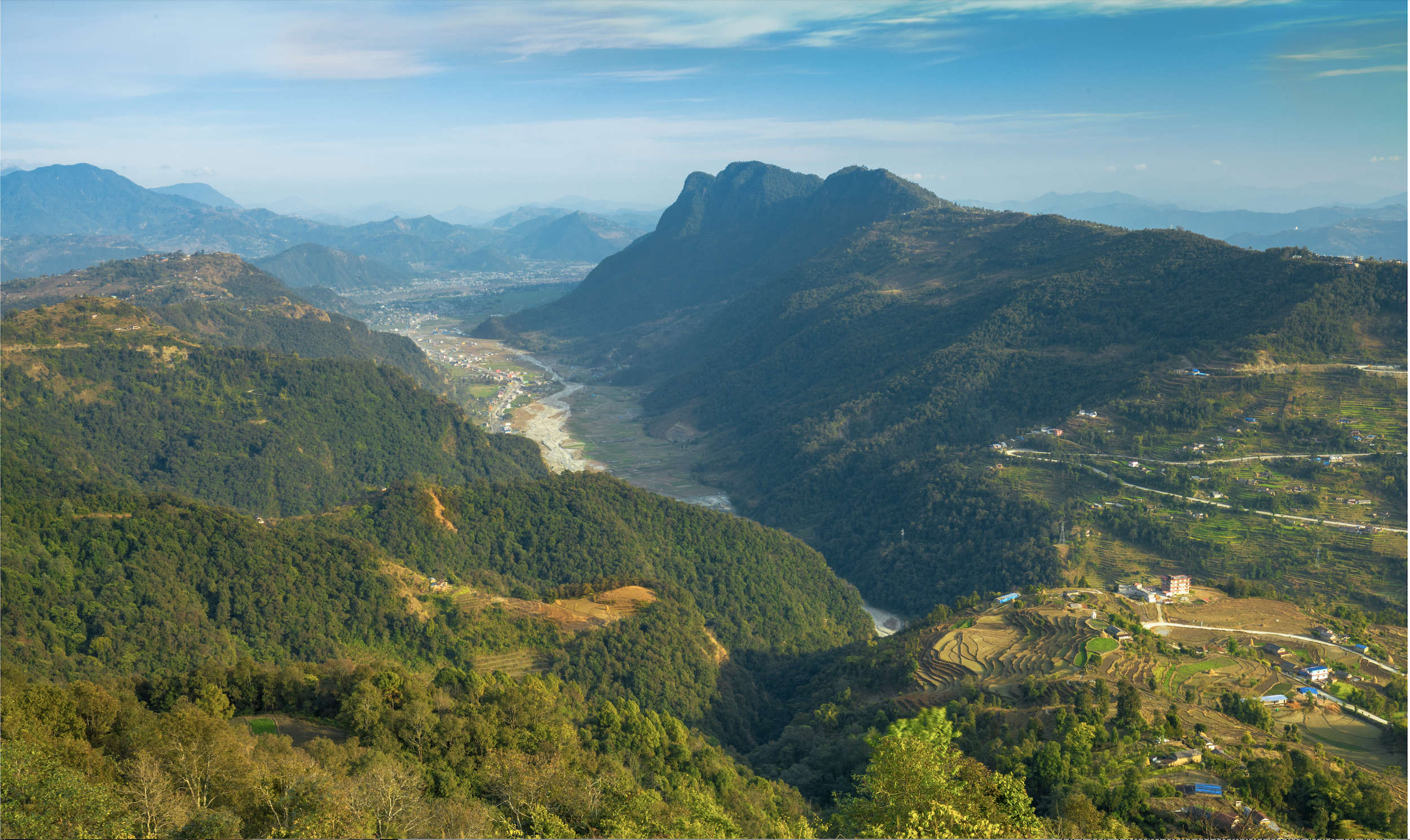How Land-based Mitigation could be scaled up in Nepal
We have identified a portfolio of land-based mitigation technologies and practices (LMTs for short) that stakeholders across Nepal’s land-use sector consider to be the best suited to that country. In this new report, we describe a range of possible ways these LMTs could become widely adopted (we call these scaling scenarios). We’re using these scenarios to develop simulation models that anyone can use to reliably estimate how much carbon could be stored in each of these scenarios. This can potentially inform everything from individual farmers’ soil management practices, to national climate plans and international climate negotiations.
The report identifies four LMTs for Nepal: rice management, forestry (which includes both afforestation and forest management), agroforestry, and organic farming. Here are some potential benefits and risks associated with scaling up each LMT that policymakers should be aware of.
Rice management: no tillage, dry seeded rice
Rice is a really important staple food crop in Nepal. It is cultivated over 1.5 million hectares of land in different agroecological zones, with a production of 5.61 million tonnes per year, which is about half (51.6%) of total food grain production. But, were farmers in Nepal to change how they cultivated it, that could potentially sequester 2.43 Mt CO2e/y. Doing third could also lead to a range of other additional benefits.
The method of rice cultivation we explored for Nepal is no-tillage dry seeding rice. This involves sowing rice a depth of two to three centimetres directly in untilled soil, using a tractor-drawn seeder. This process replaces the traditional method of raising seedlings in nurseries and manually transplanting them in massively puddled soil. Planting seeds directly avoids the costs associated with land preparation, nursery bed preparation and transplanting of the seedlings, and requires less labour and water.
Benefits
No tillage dry seeding rice can potentially reduce greenhouse gas emissions, improve soil health, and increase yields. It also can have vastly lower labour and crop establishment costs, (labour is increasingly expensive and in short supply in Nepal) and help to reduce the use of synthetic fertilizers and pesticides.
Risks
There is, however, a risk of yield losses due to inappropriate management practices, unsuitable soil, weed infestations and climatic stresses. Lack of financial and technical support for farmers are also issues to be aware of. Soil drainage and water retention capacity could also constrain the adoption of dry seeded rice at a large scale.
Afforestation and Forest management
The forestry sector plays an important role in the Nepalese economy. Forests are a source of fuelwood, timber, and fodder for forest dependant households. Forests cover about 5.96 million hectares, which is 40.36% of Nepal’s the total area. However there is an increased risk of forest fires, flooding and landslides. Forest fires are becoming more common in Nepal, but do not receive much attention from policymakers, because there are very few human casualties from wildfires. Wildfires mostly occur in government forests, and appear started deliberately, in an attempt to increase the grass inside the forest.. Forests are also affected by increasing river floods in the Terai region, and landslides in hills and mountain regions. The increase in river floods and landslides in the future could damage a large forest area in the long-term.
Afforestation and forest management together have significant carbon sequestration potential, amounting to a potential 25.67 4 Mt CO2e/y.
Benefits
Adopting improved forest management practices at scale would likely increase carbon sequestration, improve biodiversity, and provide economic benefits through the sale of timber and non-timber forest products. It can also help to reduce the risk of forest fires and landslides.
Risks
Forest management can be expensive and requires significant technical expertise. There is also a risk of unintended consequences, such as changes in water availability or impacts on local communities.
Agroforestry
Agroforestry is a sustainable land management practice in which trees and crops are grown together. Agroforestry is a traditional practice in Nepal. The planting of fruit and fodder trees in edges of terraces of croplands is commonly practised in Nepal’s hill and mountain regions.
Benefits
Agroforestry can increase carbon sequestration, improve soil fertility, and provide economic benefits through the sale of timber and non-timber forest products. It can also help to reduce the risk of soil erosion and improve water quality.
Risks
Agroforestry can be labor-intensive and requires significant technical expertise. There is also a risk of unintended consequences, such as changes in water availability or impacts on local communities.
Organic Farming
Organic farming is generally thought to increase carbon sequestration by means of organic soil amendment. This also improves the resilience of the agroecosystems. In developing countries, including Nepal, organic farming is increasingly popular, as farmers can get premium prices, resulting in an improvement to their livelihoods.
Benefits
Organic farming is also good for biodiversity and soil health, and lowers farmers’ energy consumption. Most significantly, it has a significantly better benefit-cost ration for many of the crops farmed in Nepal.
Risks
Barriers to organic farming taking off in Nepal include a lack of knowledge in soil nutrient management among farmers and the fact that farmers struggle to get their crops certified as organic, which cuts them off from the more lucrative international organic food markets.
Conclusion
Overall, each LMT has the potential to provide significant benefits in terms of climate mitigation, soil health, and economic development. However, there are also risks associated with each LMT that need to be carefully considered and managed by policymakers.






